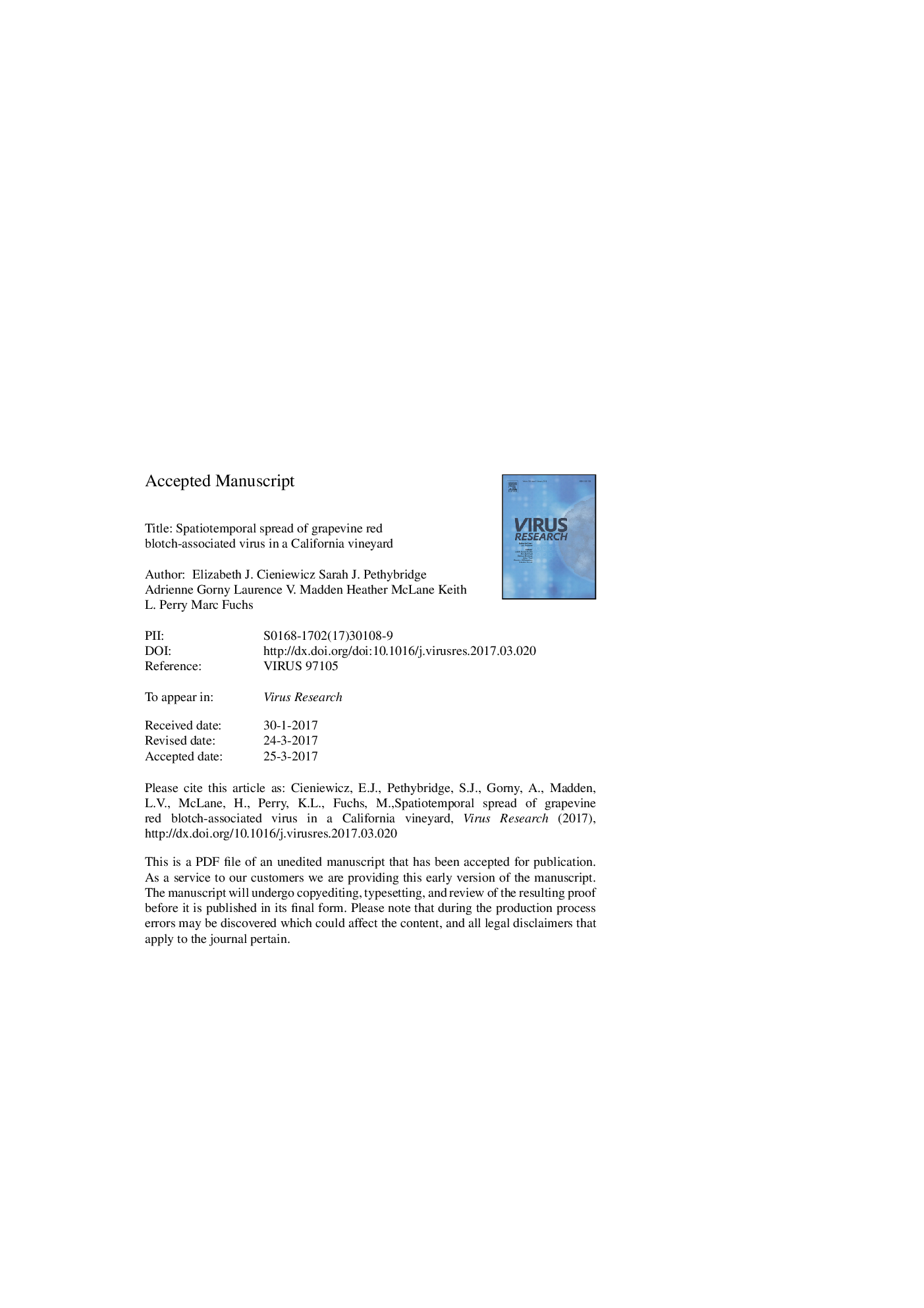| Article ID | Journal | Published Year | Pages | File Type |
|---|---|---|---|---|
| 8752114 | Virus Research | 2017 | 27 Pages |
Abstract
Grapevine red blotch-associated virus (GRBaV), the causative agent of red blotch disease, is a member of the genus Grablovirus, in the family Geminiviridae and the first known geminivirus of Vitis spp. Limited information is available on the epidemiology of red blotch disease. A 2-hectare Vitis vinifera cv. 'Cabernet franc' vineyard in Napa County, California, USA was selected for monitoring GRBaV spread over a three-year period (2014-2016) based on an initially low disease incidence and an aggregation of symptomatic vines at the edge of the vineyard proximal to a wooded riparian area. The incidence of diseased plants increased by 1-2% annually. Spatial analysis of diseased plants in each year using ordinary runs analysis within rows and Spatial Analysis by Distance IndicEs (SADIE) demonstrated aggregation. Spatiotemporal analysis between consecutive years within the association function of SADIE revealed a strong overall association among all three years (XÂ =Â 0.874-0.945). Analysis of epidemic spread fitting a stochastic spatiotemporal model using the Monte Carlo Markov Chain method identified strong evidence for localized (within vineyard) spread. A spatial pattern consisting of a combination of strongly aggregated and randomly isolated symptomatic vines within 8-years post-planting suggested unique epidemic attributes compared to those of other grapevine viruses vectored by mealybugs and soft scales or by dagger nematodes for which typical within-row spread and small-scale autocorrelation are well documented. These findings are consistent with the existence of a new type of vector for a grapevine virus.
Related Topics
Life Sciences
Immunology and Microbiology
Virology
Authors
Elizabeth J. Cieniewicz, Sarah J. Pethybridge, Adrienne Gorny, Laurence V. Madden, Heather McLane, Keith L. Perry, Marc Fuchs,
